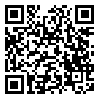BibTeX | RIS | EndNote | Medlars | ProCite | Reference Manager | RefWorks
Send citation to:
URL: http://salmandj.uswr.ac.ir/article-1-1226-en.html
2- Department of Demography, Faculty of Social Sciences, University of Tehran, Tehran, Iran. ,
Objectives This study analyzes the consumption pattern of health care costs in Iranian urban households’ life cycle costs with a focus on aging period during 1997 to 2013.
Methods & Materials This study is a secondary analysis conducted using data from the UN Population Division and household income and spending, with the help of pseudo-panel method. In order to recreate and analyze data, STATA software is used. In addition, the index of scale is used for adjusting the amount of costs relative to household size and age of people in the household, and the consumer price index is used in order to adjust inflation of the costs in different years.
Results Findings showed that the population is transitioning from youth to old age; the number of elderly is estimated to reach over 10 million people, i.e. more than 11%, in 2036. Analysis of the effects of aging on health care costs show that demand for consumption from age 25 to 50 years is gradually growing; this demand then reaches its climax in the final years of an individual’s life. The effect of generation showed that new generations have a higher demand for consumption of healthcare costs compared to the previous generations. The results of the study indicate that the demand for consumption is initially fixed and then is increased or decreased in the mentioned years.
Conclusion Based on the results of this research, it can be said that people throughout their life cycle always allocate a percentage of their total spending to health care costs, but the percentage of this allocation is different at different ages. In a way the demand for healthcare costs increases with aging, it rises significantly in the old age. At the macro level, due to an increase in the percentage of elderly in the population over the next decade, there will also be an increase in the share of health care costs.
Received: 2017/03/07 | Accepted: 2017/05/15 | Published: 2017/07/01
| Rights and permissions | |
 |
This work is licensed under a Creative Commons Attribution-NonCommercial 4.0 International License. |






